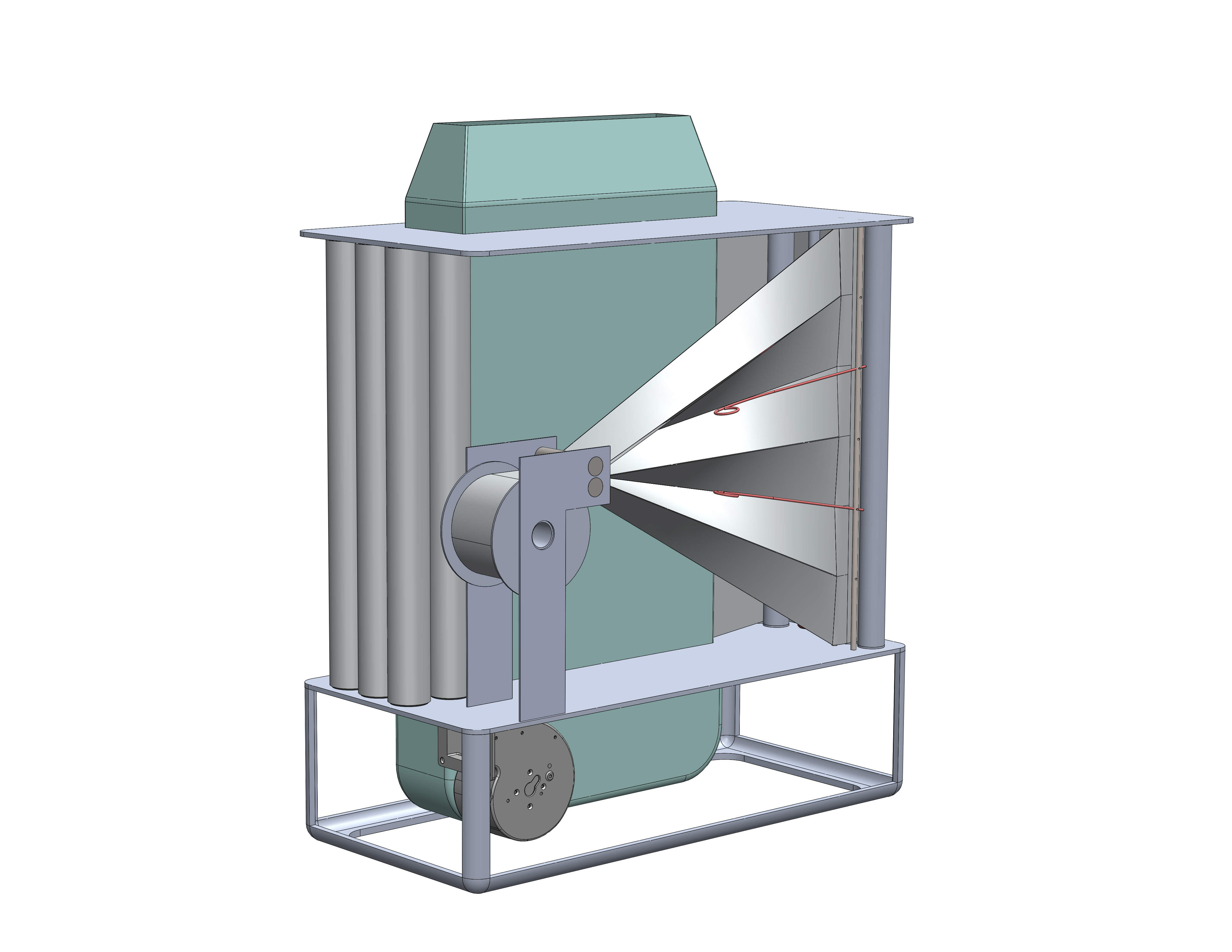Atmospheric Aerosol Sampling Systems
Creare is developing a low-power atmospheric aerosol sampling system that employs electrostatic precipitation for the Department of Energy (DOE). One application of this system of particular interest to the DOE is for sampling radionuclides. Collecting radionuclide aerosols from the atmosphere and measuring the isotopic composition is a well-accepted method for detecting, locating, and identifying uranium- or plutonium-based nuclear events and monitoring compliance with nonproliferation treaties such as the Comprehensive Nuclear Test Ban Treaty (CTBT). Numerous remote and automated measurement stations in place across the world maintain a continuous, global monitoring network called the International Monitoring System (IMS).

Radionuclide monitoring station locations.
A key process needed to support monitoring is an efficient way to capture and collect atmospheric aerosol particles. Current systems use conventional paper filtration for particulate collection. This method is effective but is characterized by a high pressure drop and requires high blower power (~2kW) to achieve the required high flow rates and detection sensitivity. The high power requirement limits the system reliability—during the Fukushima nuclear reactor accident, power outages at the Japanese monitoring station caused the system to rely on backup power supplies, which were insufficient to supply the blower. Thus, the station was unable to collect data on the radionuclide concentrations released by the damaged reactor.
Improved Aerosol Collection System Uses Less Power
Our system (shown in the first figure) will reduce the required blower power substantially while maintaining high collection efficiency. An electrostatic precipitator can accommodate significantly increased flow volumes, which can increase the instrument sensitivity and provide design flexibility. Electrostatic precipitators (ESPs) require high voltages, but run at very low currents so that the supplied electrical power is typically low. The open flow channels in an ESP result in very low pressure drops and thus require much less blower power than conventional filters. This approach will allow for huge reductions in system power and increased flow volumes, providing increased sensitivity when needed.
A key part of enabling effective sampling is minimizing cross-contamination of collected samples. Creare’s approach captures and seals the collected particles in a compact sample that can then be sent to a gamma ray spectroscopy detector to measure radioisotope decay. Due to its low power draw and pressure drop, this sampling approach could also be employed on small aircraft or UAV’s for other types of atmospheric aerosol research that require physical particle samples.
Download a copy of our recent DOE project briefing presentation here.
Acknowledgment: This material is based upon work supported by the U.S. Department of Energy, Office of Science, under Award Number DE-SC0015731.
